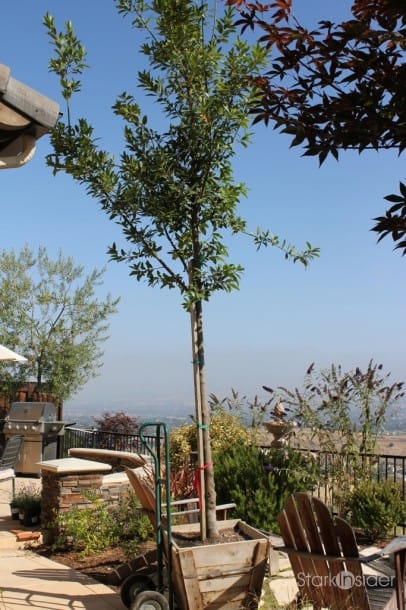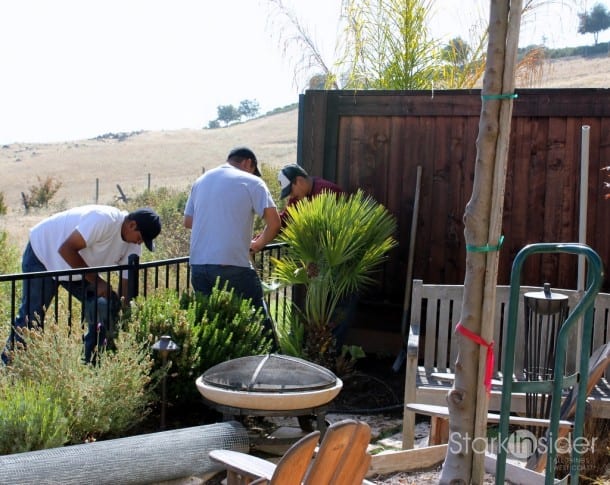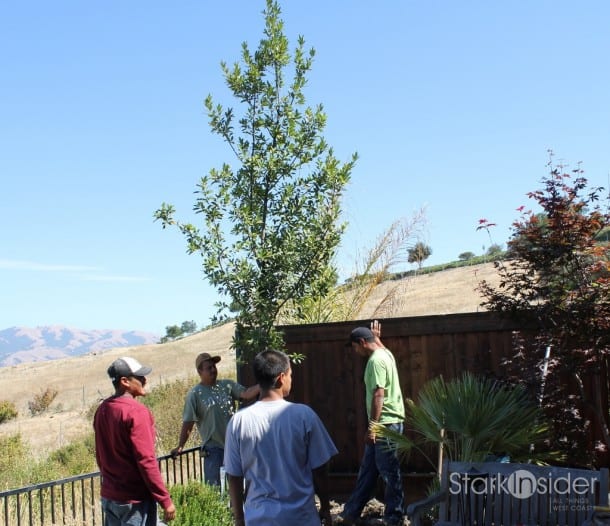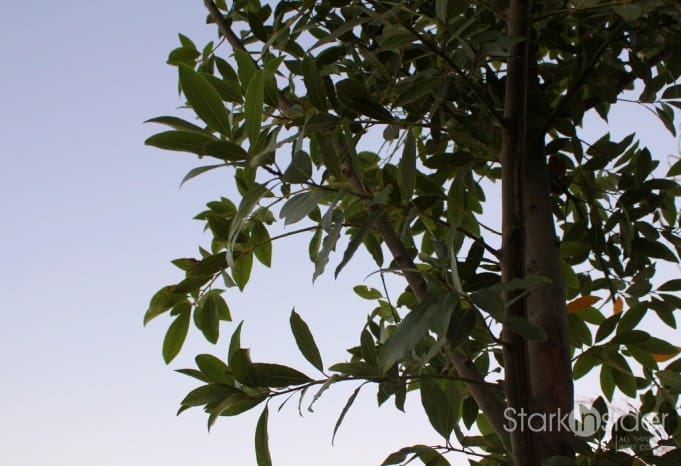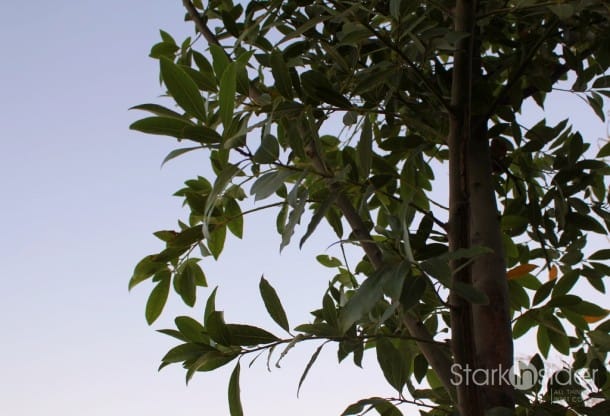
Kitchen and bathroom remodeling often bubble to the top of the list as home improvement projects that have the greatest return on investment. But what if your kitchen already has granite counter tops? Or, after all the stock market volatility, the last thing you want is your bathroom sanctuary to become a construction zone.
No problem. Take a deep breath, break out into a yoga move and plant a tree.
Trees are great for the environment, but their greenness doesn’t stop there. The Council of Tree and Landscape Appraisers states that “a mature tree can often have an appraised value of $1,000 and $10,000.” That is a significant return on investment for planting a 15 gallon or 24-inch box tree costing $100-300. Arbor Day Foundation estimates that “trees around your home can increase its value by 15% or more.”
Besides the quantitative increases in home values, mature trees, in combination with established, lush landscaping becomes a key differentiator compared to shiny brand new homes in the area which may have the latest kitchen gadgets.
Because the impact of trees on home value increases as they mature, it is important to plant them sooner than later. You can enjoy the beauty they add to your landscaping and have time working in your favor. The exponential increase in value of trees is also reflected in the price you pay for trees and the costs of installation. I recommend sticking to either 15 gallon or 24-inch box sizes. Once you get into 36-inch, 48-inch box sizes of trees, the price for the trees can range from $500+ and the expense to install jump significantly since special machines are needed to carry the heavy tree into place. Transportation charges from the nursery also escalate.
When we first bought our home, we planted a red Japanese Maple, a fruitless Olive Tree and a Camphor tree. The home builder had already put in a green Maple tree and pink Crape Myrtle. We’ve enjoyed them so much that this past month, we decided to acquire a Bay Laurel (Laurus Nobilis) and 2 Carolina cherry laurel (Prunus caroliniana).
Just like any investment, there are considerations that will maximize your return. Generally, what is good for home values is also good for the aesthetics when it comes to tree selection and location.
Here are some tips when selecting trees for your home landscaping project.
1. Location, location, location
Before even looking at trees, survey the area around your home and look at opportune areas where trees could add an interesting focal point, a privacy screen or some shade from the hot afternoon sun. Trees planted on the west or east side of your home can decrease cooling costs by 15-35% according to Arbor Day Foundation. The location will determine the size of the trees you will want to procure. Some trees are 15 feet at maturity while others can span 80 feet. Knowing how tall and wide a tree will get and how fast it will get there will save many headaches and heartaches years down the road. Also, if you are planting near the home, make sure the roots are not evasive.
2. Soil and drainage
Once you have determined the location for the trees, check out the soil quality in the area and the drainage. We had to install a french drain along one side of our yard because the neighbor is slightly higher up and tends to over water their plants. The excess runoff would puddle along the side of our yard. We installed a french drain to protect against winter rain floods.
3. Evergreen or Deciduous
Usually the question you need to answer is: Do want a tree that keeps its leaves in the fall or lets them drop? However, choosing evergreen or deciduous has a broader set of considerations. Deciduous do drop their leaves in fall, but before they do, many of them provide some great fall colors as their leaves turn yellow, orange and red. The change can be a wonderful way to feel the transitions of seasons. Also, if you have the trees planted on the west side for shade in the summer, by winter, you may want to rid yourself of the leaves so that the sun can shine through and actually warm your home. On the other hand, if you have trees around for a privacy screen, it would be quite useless unless the tree is an evergreen. Ultimately, it is important to have a combination of both evergreen and deciduous trees.
4. How do you like them fruits?
Growing fruit trees can be very rewarding and originally I did consider getting a pear, apple or cherry tree in the place of the Bay Laurel tree I ultimately planted. The joys of harvesting a bounty of fruit and the scent of the flowers in spring can be great, but the maintenance also increases as fruit trees also attract backyard critters. For example, my neighbor that has a gorgeous pear and apple hybrid tree spends a good part of the time figuring out ways to outsmart the squirrels. In the end, I decided I could get my fruit from local organic farms. I decided on the Bay Laurel tree because it is an evergreen, but also because even though it doesn’t bear fruit, the leaves can be used as seasoning in dishes. I do have 3 dwarf citrus trees that don’t seem to attract any critters and give off wonderful fragrance and lemons and oranges in the summer and fall.
5. Easy on the eyes
Finally of course, you want to select a tree you find beautiful. Of all the considerations that I’ve listed so far, this is by far the most subjective and fun. Take your time and ask for suggestions. For a while, I was interested in planting a Magnolia Little Gem. I loved the Magnolia Grandiflora, but alas this tree grows too big for my yard. After driving around neighborhoods with mature Magnolia Little Gems, I finally decided I didn’t like the copper color on the underside of the leaves. You also want to factor in the other trees you have in the yard. The Bay Laurel tree was selected because it complemented the Olive Tree that I had on the other side of the yard and did not upstage the red Japanese Maple that already existed beside it. Although showy trees are nice, you don’t want too many in one location to compete for attention.
Also, look for possible native varieties of trees you like. Planting native trees do support the local ecosystem of birds, butterflies and bees.
Finally, I find with all these considerations, it helps to compile all the research in a electronic folder or paper notebook. In the end, a few weeks of planning ahead of time will lead to years and possibly decades of enjoyment.
